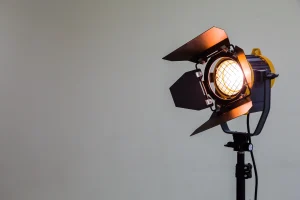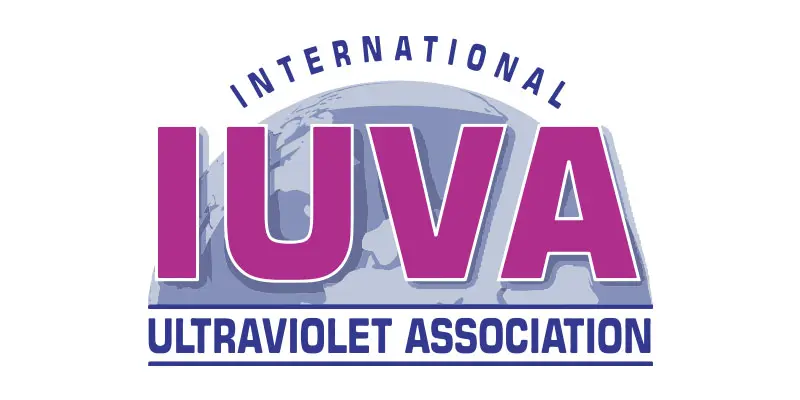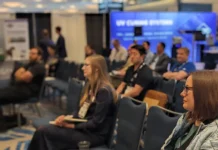UVSolutions
IUVA Releases White Paper on Far UV-C Radiation
The International Ultraviolet Association (IUVA) has released a white paper titled “Far UV-C Radiation: Current State-of Knowledge,” which is a scientific review of Far UV-C technology and the state-of-the-art research featuring key conclusions made through analysis of published literature and collation of expert knowledge. The paper can be viewed at www.iuva.org.
IUVA Asia Workshop 2021 Concludes
The International Ultraviolet Association (IUVA), Chevy Chase, Maryland, presented the IUVA Asia Workshop 2021, a virtual conference, on Feb. 18-19, 2021. The workshop hosted 449 registered participants from 38 countries for a virtual event featuring six technical sessions with 11 keynote presentations, 24 conference presentations, two poster sessions with 20 poster presentations, and one Young Professionals Forum. Themes and topics included UV disinfection, UV AOPs, UV LEDs, Far-UVC, vacuum UV, UV for healthcare applications and its role in the COVID-19 pandemic, and UV technology advances. This is the first time that IUVA organized an official large workshop in China, and it achieved significant success. For more information, visit www.iuva.org.

Webinar Series Now Online
IUVA recently released a series of webinar videos: “Enhancing the New Normalcy with Ultraviolet Disinfection.” The two-part webinar series, along with presentation slides, is available at www.iuva.org/iuva-covid-19-faq under “Additional Resources.”
IUVA Forms Committee for Regulatory Standards
The treatment of water utilizing UV technology has been around for decades. While the early applications focused on the treatment of drinking water, today the use of UV has penetrated other municipal water applications (wastewater, water reuse and ground water remediation), as well as industrial, commercial and residential markets. All of these markets and applications are not, however, homogenous. There are varying flow rates, different levels of UVT and different pathogens or chemicals of interest, with different target levels of these contaminants.
Unfortunately, the regulatory efforts have not kept pace with the expanding adoption of UV technology. In the US, the standards that exist are based on the EPA’s Ultraviolet Disinfection Guidance Manual, which was written for municipal drinking water applications. Trying to apply this framework to all these applications tends to oversize the UV units needed for a particular use. This often leads to multiple tests of the same equipment for multiple markets, adding unnecessary cost to the end user and manufacturer and slowing adoption of UV systems. The IUVA has created a committee to address these issues. The first step will be to generate a protocol, including test methods, that can be applied universally to all markets. This would include defining the dose provided at a range of flow rates and ultraviolet transmittance (UVTs). In addition, it will study the use of computational fluid dynamics (CFD) and other models to provide bracketing of product lines.
The second step will be to work with particular markets. Input will be needed from stakeholders, manufacturers, end users and regulators to define the specific requirements of their markets. These details will include pathogens or chemicals of concern, range of UVTs, typical flow rates and log reduction requirements.
Those interested in participating in this effort are invited to contact George Diefenthal at [email protected].
 Paper spotlights
Paper spotlights
Paper spotlights are short summaries highlighting recent, intriguing peer-reviewed publications with a related subject to the topics of interest covered in UV Solutions.
“Wavelength-dependent Time-Dose Reciprocity and Stress Mechanism for UV LED Disinfection of Escherichia coli”
Authors: Dana Pousty, Ron Hofmann, Yoram Gerchman, Hadas Mamane
The paper studies the time-dose reciprocity of E. coli inactivation by four different UV LED wavelengths (265, 275, 285 and 295 nm) under different UV fluence rates. The authors examine the impact of UV fluence rates on time-dose reciprocity law (Bunsen-Roscoe law), observed in mercury UV lamps and the deviations from the law in the UV LED wavelengths. This article gives an insight into how evaluating microorganisms’ reactions to low-irradiance sources may be an essential step in designing efficient UV LED-based disinfection point-of-use reactors, due to the low output power of the UV LEDs compared to UV lamps.
“Summary of Destruction of Per- and Polyfluoroalkyl Substances (PFAS) with Advanced Reduction Processes (ARPs): A Critical Review”
Authors: Junkui Cui, Panpan Gao and Yang Deng
This paper covers the use of advanced reduction processes (ARPs) for degradation and defluorination of PFAS compounds. The authors detail the destruction pathways and mechanism of PFAS compounds and highlight the three main parameters used to determine efficacy of treatment. Full descriptions of the effects of pH, solute concentration, DO, humic acid, nitrate and temperature on PFAS destruction are presented. Highlighting effectivity of UV-based ARPs for PFAS destruction, authors mention some barriers hindering this emerging technology from being ready for use at full scale.
Updates from the IUVA YP Committee
The IUVA Young Professionals Committee would like to welcome new coordinators:
- Saketh Thanneeru, Strategic Growth Coordinator
- Milad Raeiszadeh, Technical Communications Coordinator
- Karthickraj Muthuramalingam, Conference Coordinator
- Sean McIssac, Engagement and Outreach Coordinator
- Megan Wood, IUVA Americas Conference Coordinator
- Daniel Spicer, IUVA Young Professionals Co-Chair
- Molly McManus, IUVA Young Professionals Co-Chair
In addition, the YP’s express appreciation to the outstanding voluntary works of previous coordinator members.
The IUVA YP podcast
Episode five of the IUVA YP’s podcast, Wavelength, discussed UV disinfection in healthcare settings with two invited experts: Barry Hunt, Prescientx, and Dr. Richard Martinello, Yale New Haven Health. The guests discussed the ways UV technology is being used in healthcare settings and the innovations needed and emerging, especially in a pandemic. The Wavelength podcast can be found at www.podbean.com and www.iuva.org.





